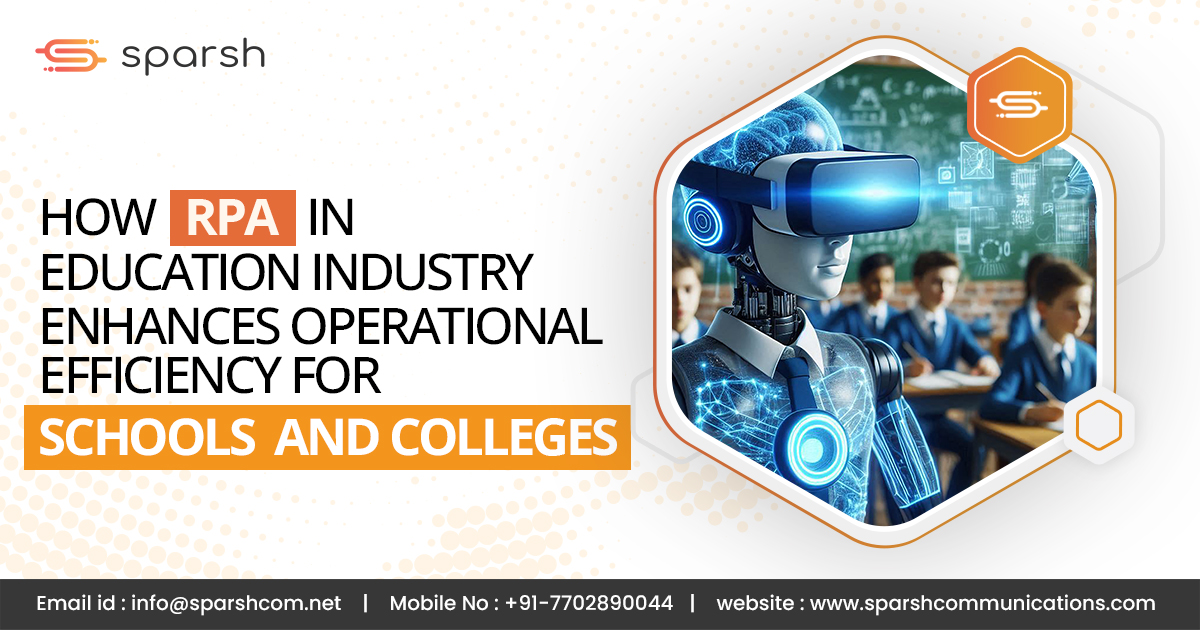How RPA in Education Industry Enhances Operational Efficiency for Schools and Colleges

1. Robotic Process Automation for the Education Industry: Why?
Robotic Process Automation (RPA) is gaining traction in the education sector as institutions look to streamline their administrative duties and enhance overall operational efficiency. RPA offers a way to automate routine and time-consuming tasks, allowing staff to focus more on student interaction and less on paperwork.
2. Impact Of RPA on Education Industry
RPA transforms many administrative processes, which has a significant impact on the education sector. This technology reduces the manual workload by automating tasks like data entry, analysis, and reporting, thereby speeding up operations and reducing errors.
3. How is RPA Transforming the Education Industry?
i. Use Cases of RPA in the Education Sector
- Enrollment process: Automating the enrollment process ensures that student data is entered accurately into systems, streamlining admissions and reducing the administrative burden.
- Schedule meetings: RPA can manage calendars for faculty and schedule meetings automatically, optimizing the use of time and resources.
- Track attendance: RPA solutions can automatically track student attendance, flagging inconsistencies and ensuring compliance with educational policies.
- Fee Management: Automating fee collection processes ensures timely payments and reduces the complexity of handling financial transactions.
- Monitoring students’ performance: RPA tools can gather data on student performance and generate comprehensive reports, aiding in the effective monitoring of academic progress.
4. Benefits of RPA in the Education Industry
- Better management: RPA provides more streamlined management by automating day-to-day operations, leading to better organized educational environments.
- Increased productivity: By reducing the time spent on administrative tasks, staff can dedicate more energy to improving student services and teaching quality.
- Improved work execution: Automation reduces the risk of human error, ensuring tasks are performed consistently and correctly.
- Cost-saving Insights: RPA helps identify inefficiencies within processes, offering insights that can lead to significant cost savings over time.
5. Challenges and Considerations When Implementing RPA
- Implementation Costs: Initial setup and integration of RPA systems can be costly, requiring significant upfront investment.
- Data Security: Ensuring the security of sensitive student and institutional data is critical when implementing RPA.
- Change Management: The shift to automation may meet resistance from staff accustomed to traditional methods of operation.
- Scalability: Institutions must choose RPA solutions that can scale with growth without requiring extensive reconfiguration.
6. Conclusion
The introduction of RPA into the education sector represents a transformative shift toward more efficient, accurate, and productive administrative processes. As schools and colleges continue to face increasing demands for better services and reduced costs, RPA stands out as a key technology that can help meet these challenges. However, successful implementation requires careful planning, consideration of potential challenges, and a commitment to ongoing evaluation and adaptation. By embracing RPA, educational institutions can not only improve their operational efficiencies but also enhance the educational experience they provide.









